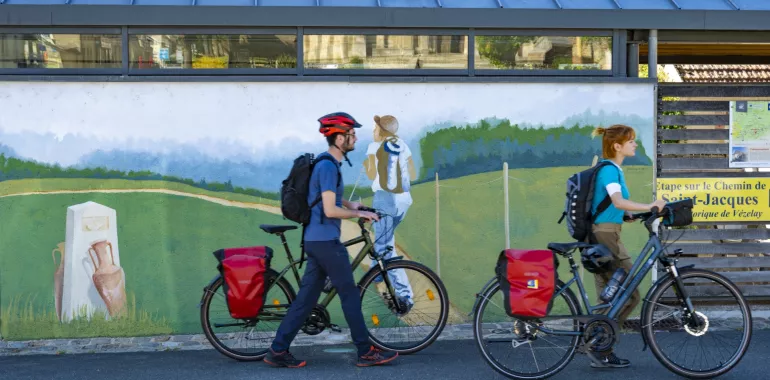22,01 km cycling route from Châteaumeillant to La Châtre
Elevation of the stage
Waytypes of the stage
Surface of the stage
Cycle route from Châteaumeillant to La Châtre
Signposting couldn’t be much clearer, so make the most of it to see the many attractions scattered around the Pays de George Sand. Leaving Châteaumeillant, you can even enjoy riding through the local vineyards.
One tip: avoid the temptation to join the D943 road to gain a few minutes at best, as that road, while straight, isn’t set up for cyclists’ safety and lacks interest.
Link
The Saint-Jacques à Vélo - Via Vézelay cycle route joins the Indre à Vélo – V49 cycle route at the level of Briantes, along the D84 road. This route, also connected to the greater Loire à Vélo cycle route, allows you to ride along peaceful country roads, immersed in a bucolic atmosphere, passing a whole lot of heritage sites and villages well worth exploring.
For further information on the Indre à Vélo.
Tourist information
- Agence française des chemins de Compostelle – 05 62 27 00 05
- Office de Tourisme Intercommunal Pays George Sand, 134 Rue nationale, 36400 La Châtre - 02 54 48 22 64
- Agence de développement touristique de l’Indre
SNCF train services
- Please note, no train stations serve this stage until the town of La Souterraine, but, if you’re willing to take a slight detour, there is a station at Eguzon-Chantôme.
Don't miss
- Châteaumeillant: wine-making in these parts goes back a long way, the first mention of Châteaumeillant vineyards dating back to Gregory of Tours, writing in 582, while today the area produces reds and rosés from its specific terroirs.
- La Motte-Feuilly: a château with two imposing towers and a chapel built for the castle’s most famous proprietor, Charlotte d'Albert, abandoned wife of Cesare Borgia, the place serving as home to the beautiful Loriane in George Sand’s novel, Les Beaux Messieurs de Bois Doré.
- La Châtre: the Musée George Sand et de la Vallée Noire, containing a collection some 6,000 objects and documents going from Antiquity to contemporary times, covering many themes; an exceptional half-timbered home, known as La Maison Rouge, built in the 15th century.


Travellers’ reviews